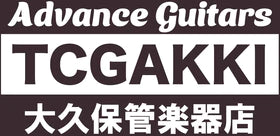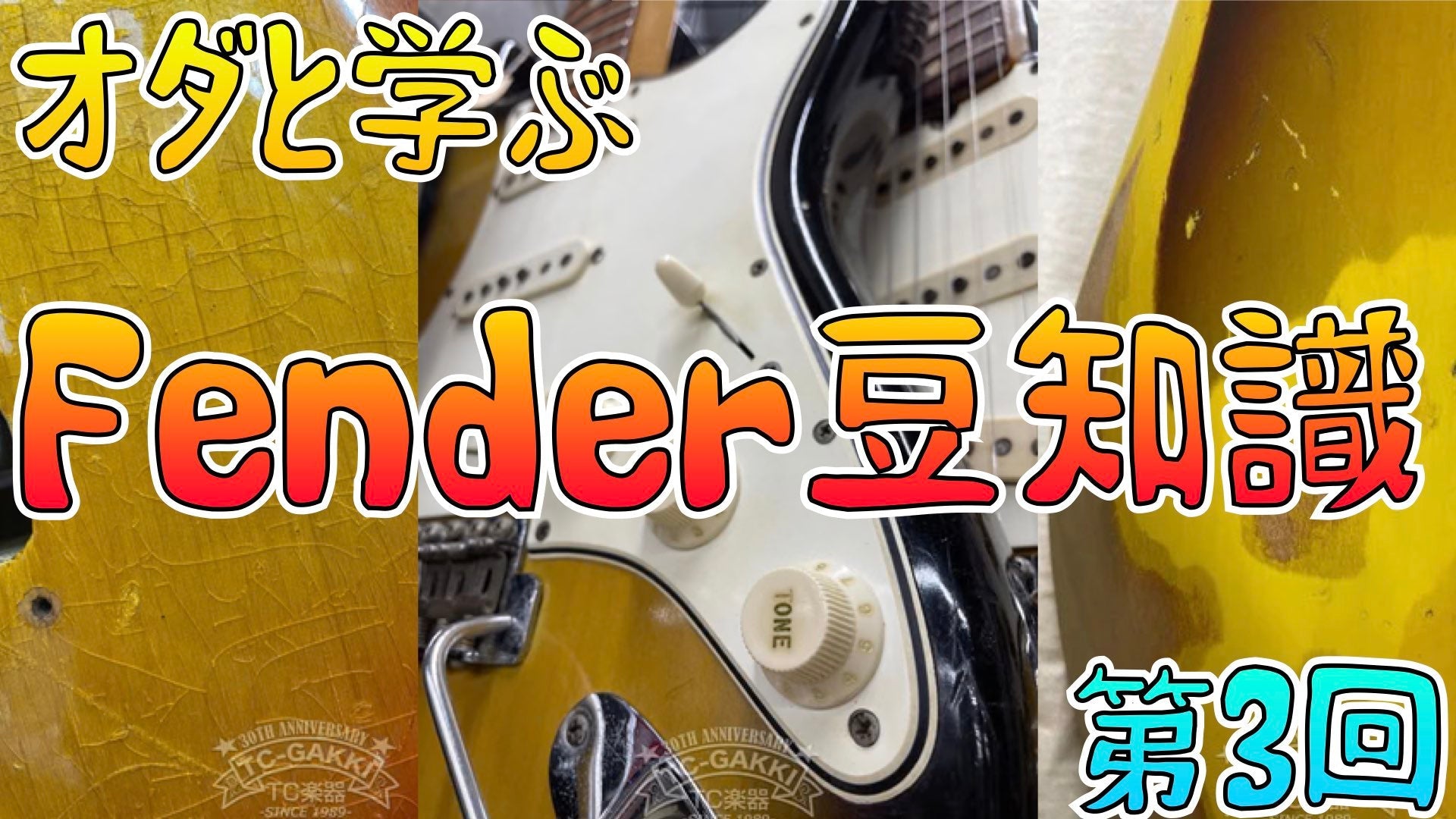OdaThe following is the list of Fender's Fender beans!
I have been uploading trivia about electric guitars on X (Twitter),
I will write more detailed tidbits in this update since I can only tell you in a limited number of characters on X!
I'm not saying it will make you a better guitarist or anything, but I'd be happy if you just think "huh?
(But knowing more about guitar = liking guitar more = practicing guitar more = maybe getting better at guitar. LOL)
) I myself write this while thinking "huh", so let's "huh" together!
The second issue was the fretboard/neck/head section.
This time, we finally arrived at the body!
So this time we focus on the body,Body material/paint/neck plate/pickguard/knobsand the body material/paint/neck plate/pickguard/knob section.
Ash Body
In the early days of Fender Stratocaster, ash was used as the body material, following the Telecaster's trend, but it was changed to alder in the middle of 1956 (with some exceptions), and ash wood was revived in 1972.
Ash wood is characterized by its hardness, and its low and high notes have a strong sound!
However, the ash of the 70's is different from that of the 50's!
There are different types of ash, and the one that was used in 1954~56 wasSwamp ash(also used in Telecaster), and in the 70'sWhite ashand has a tendency to sound lighter and a little more lofty than the 70s white ash.

Alder body
In the middle of 1956, the Stratocaster body material was changed to alder, and the alder body continued to be used until 1972. (Alder body)There are exceptions such as blond color models.)
Alder wood is relatively soft, and its sound has a peak in the low to middle range, and the highs are more subdued than those of ash wood.
Fender uses a type of alder called red alder, which is lighter in weight because the wood is not as dense, and is said to resonate in a well-balanced way.

Lacquer coating
In StratocasterUntil the middle of 1967The body was painted from undercoat to topcoatCompletely lacqueredThe body was completely lacquered.
Since the lacquer coating is very thin, it is easily affected by temperature and humidity, and the parts that come into contact with the body can peel off, making it a very delicate coating.
Lacquer paint dries very slowly and changes rapidly over time. The later change to poly coating is thought to be mainly due to the long drying time required. (See below).
There is a reason why there are still many people who say, "Lacquer is the only way to paint! There is a reason why there are still many people who say, "Lacquer is the only way to paint!
The thin coating makes the wood sound better, and the paint cracks (weather checks), scuffs, and changes in color appear as the instrument ages. It is interesting to see how what was once thought to be a disadvantage gradually becomes an attractive feature of the instrument.

Poly coating
Since 1967, the body has been painted withPolyesterIn 1969, the neck was also coated with polyester, and the playing comfort changed dramatically.
The advantage of the poly coating is that the coating cures quickly and the sound is exactly as the manufacturer intended at the time of shipment. It is also resistant to scratches and changes in temperature and humidity.
Poly coating is generally considered less expensive than lacquer coating, but in terms of the cost of the paint itself, there is no significant difference. However, the drying time is very short compared to lacquer, resulting in lower cost.

Thick Skin Finish
The body was poly coated from 1967, but not all were poly coated until 1982,Polyester undercoat、Color coat and top coat are lacquer.were used for the color coat and top coat.
At the time, this use was calledSix Skin FinishThe company was actively promoting the product as an upgraded paint job, calling it "Six-Skin Finish.
Sunburst
Sunburst is the standard color for Stratocaster.
The character of "sunburst" changes depending on the age.
1954~7Two tone black on yellow
1958~3-tone with red added, then consistently 3-tone sunburst (some models from around 1960 and 1967~9 appear almost 2-tone, as the red tends to fade).
1964~.The base yellow color changed, and the paint and painting method became less transparent to the grain of the wood.
1968~The texture has changed considerably due to the change to poly coating.
1979~In addition to the 3-tone sunburst, tobacco, cherry, and other sunbursts appear as standard colors.



(This is a '66 Jaguar, but the topcoat has peeled off to expose the yellow groundcoat, which does not allow the grain to show through.)
Neck Plate
Fender neck plates are available in square and triangular.
The Stratocaster had a square neck plate from 1954 to 1971, and a triangular one from 1972 onward.
There are different types of plates, and the transition is as follows.
Early 1954 square no serial
1954~65 with square serial
1965~71 with square serial + F logo engraved
1971 Triangular serial + engraved F logo + engraved PAT.PENDING
1971~76 without triangular serial + engraved F logo
1976-1982 No triangular serial number + engraved F logo


Pickguard
Stratocaster pickguard from 1954~59Made of 1-ply vinyl chloride。
Rosewood fretboard was introduced in 1959.Made of 3-ply celluloidThe three-layer white/black/white structure is yellowed white with a greenish appearance through the middle layer. The three-ply white/black/white construction has a yellowish white color, and the middle layer shows through the white and looks greenish,Green GuardThis is why it is called "Green Guard".
It is reproduced well in the reissue model.

Thereafter, Greenguard was used until around 1964, but it had problems with discoloration and shrinkage because it was made of celluloid.
From the end of 1964 to 1968, the three-layer structure was retained, but the discoloration-resistant3-ply vinyl chloridewhich is hard to discolor.

The 3-ply vinyl chloride was continued from about 1969 to the end of 1975, but the edge angle was tightened (from 40° to 60°) and the back side was matted.
From 1976, plastic parts, including the pickguard, begin to be unified in black.
Since the pickguard was changed ahead of the others, there are strats with mixed specifications of black PG, white PU cover, and white knobs in this year.
The photo shows a 1979 model. Black/white/black.Made of 3-ply PVCThe photo is of a black/white/black 3-ply vinyl chloride

Control knob
Although the Stratocaster's control knobs were changed twice by 1957*, from then until 1977 they were uniformly made of nylonWhite knobwas used until 1977.
Since the plastic parts are unified to black after 1977,Black KnobThe knob will be changed to
The photos show the '66 and '79 models!
54 years -> Styrofoam short skirt knob
54~57 -> White Bakelite knob made of melamine
The change to nylon is said to have been made to improve durability.


How was it?
Thank you again for reading to the end of this issue.
We also post daily on X (Twitter), so please follow us!♪
See you next time and let's "hee-hee" together!
Oda

